Pothos plant is one of the most beautiful and easiest houseplants to grow and maintain. It needs low maintenance or care and develops in any weather conditions. However, a little careless maintenance can cause pothos plant leaves curling and indicate the pothos plant is not happy.
So, there are some fixes to eradicate pothos leaves curling and support pothos plant health.
What is a Pothos Plant?
Pothos plant (also known as golden pothos, devil’s Ivy, snd devil’s vine) is the least demanding houseplant and grows almost in every weather condition (until suitable). This plant is native to Solomon island in the South Pacific or French Polynesia.
Pothos plants have broad, heart-shaped glossy leaves with different variegations such as pale, green, white, and yellow.
Pothos plants or devil’s Ivy have trailing vine growth and are a perfect source of indoor decorations (bookcase or desk) or where the trailing effect is needed. They can multiply quickly indoors with less care throughout the year and reach lengths 1-1.5 feet within a month.
Mature pothos plants are 20-40 ft and grow in well-drained soils. The best-suited soil pH for pothos plants is neutral to acidic and does not flower.
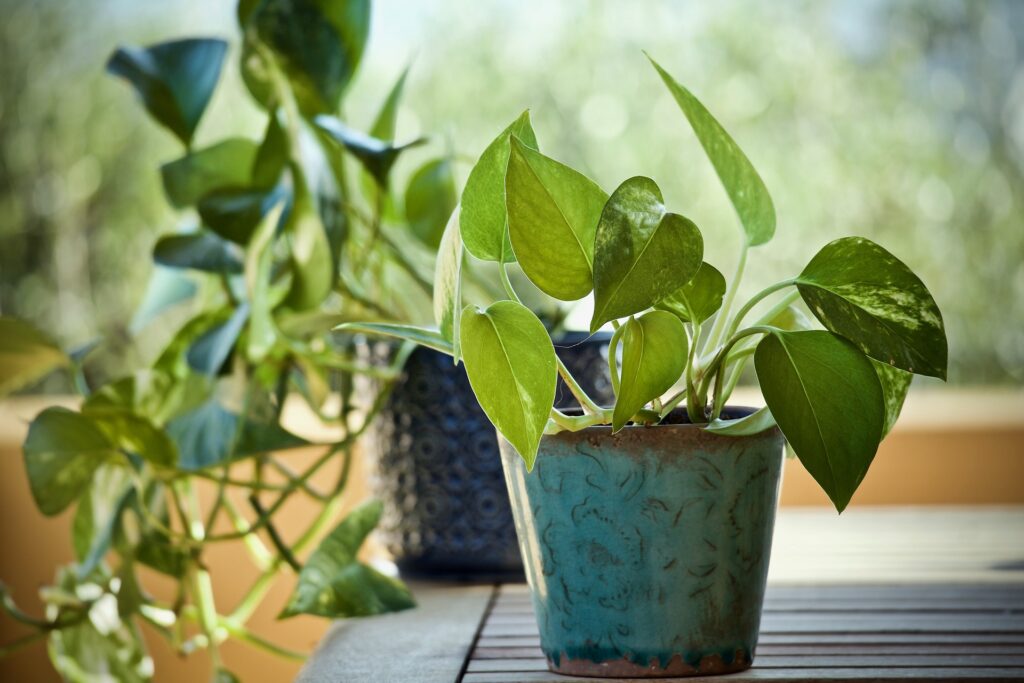
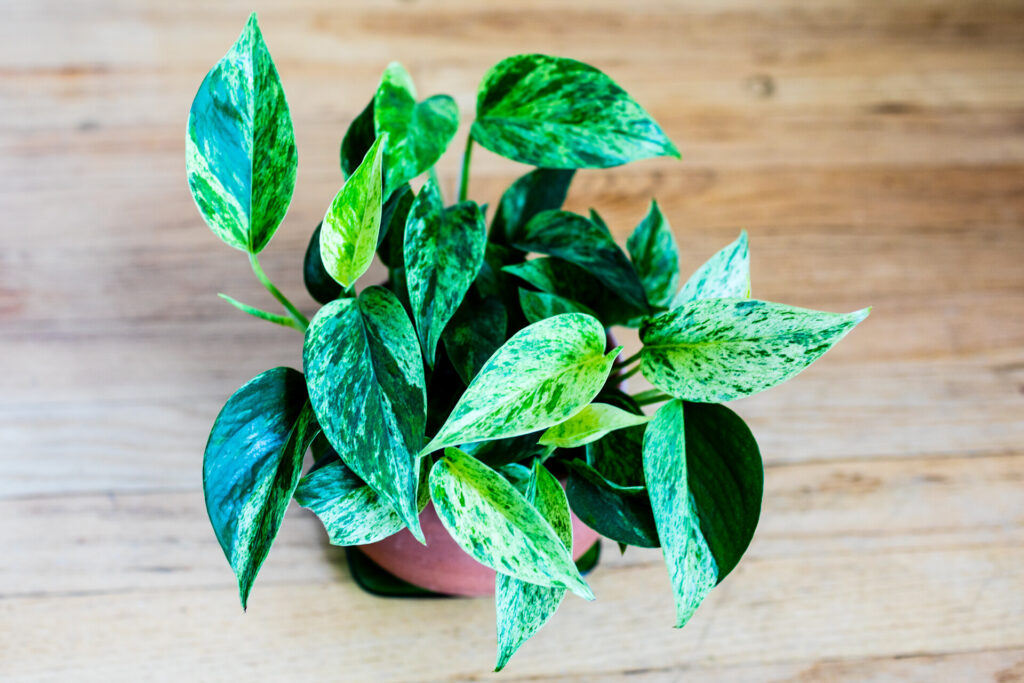
Pothos plants are considered one of the best houseplants because of
- It grows quickly
- Purify the air and keep indoors clean from toxins such as xylene, formaldehyde, and benzene
- In natural environments, it proliferates quickly and reaches 60 feet long, just like trees.
- The other names for pothos plants are money plants, taro vine, and hunter’s robe. It is also called devil’s Ivy because it is impossible to kill this plant in natural environments and become invasive towards other plant species. And pothos plants are also considered toxic for pets (cats and dogs).
RELATED: Why Are The Leaves Turning Yellow? 8 Reasons Why Your Pothos Is Changing Color
What are the Reasons for Pothos Leaves Curling?
Plant pothos requires little care in terms of growth and grow rapidly. However, if there are minor improper growth conditions for them, the pothos leaves are curling and not happy. Following are the reasons why pothos leaves are curling:
- Disease and insect pest infestation
- Underwatering
- Root rot due to overwatering
- Too much fertilizer applications
- Less direct sunlight (little or too much light & sun exposure)
- Improper temperature conditions or temperature stress
Disease and Insect Pest Infestation
Diseases and insect pest infestation play a central role in the pothos leaves curling. Insect pests suck indoor plant sap and feed on glossy leaves. While microbes induce color variations in leaves, such as
Bacterial Leaf Spot
This disease causes water-soaked brown spots with light yellow halos around them. These spots spread rapidly on leaves and cause leaf curling.
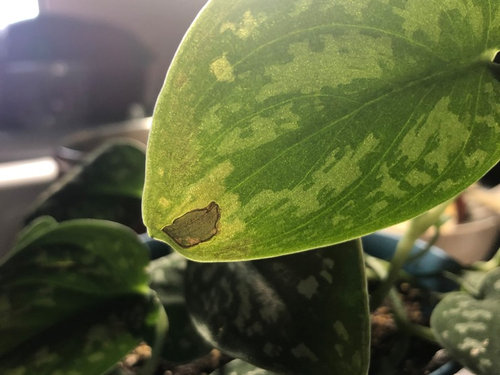
Another common agent of pothos leaf curling is an algal pathogen. The symptoms on leaves are below:

Simply pull off the infected leaves or plant parts to cure this disease. Another critical approach is to avoid overhead watering of these plants.
Pothos Root Rot
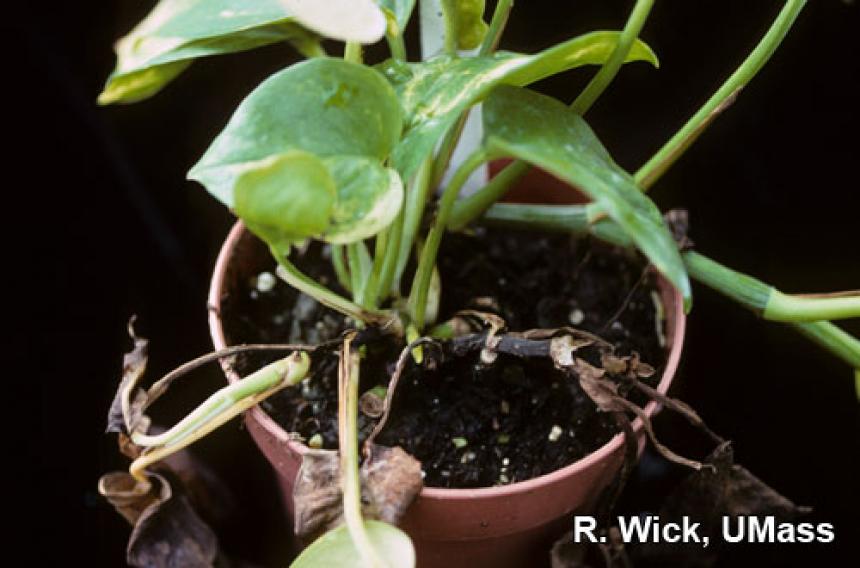
This disease impacts the plant roots and turns the green pothos leaves into yellow ones, resulting in drying and wilting of leaves. And the stem of infected plants has a mushy black appearance.
Excess water, excessive fertilizer, and contaminated potting soil introduce this disease’s causal agent (Phytophthora).
To avoid pothos root rot, apply fungicides and resilient plants. In addition to that, also let the soil dry first, then sprinkle water moderately.
Ethylene Damage of Pothos Leaves
Pothos are low-maintenance houseplant and grow rapidly with less care. However, excess nutrients and watering cause damage to pothos and let leaves curl. Ethylene causes pothos foliage to turn yellow, tan brown to light brown.
The plant appears wilted and dead even the moisture levels are adequate.
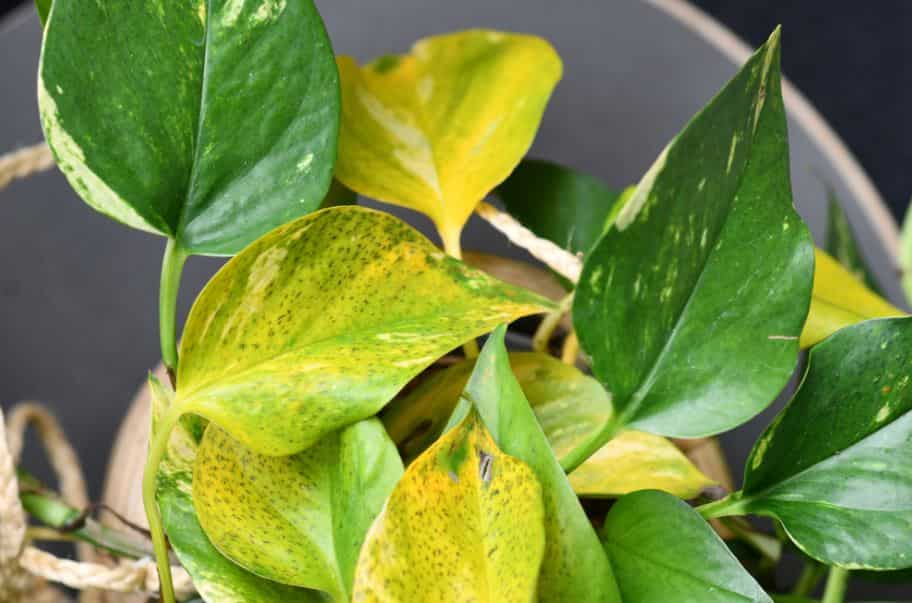
Over Watering
Pothos is a popular houseplant due to its low maintenance and rapid growth. They grow into lush green, healthy plants with heart-shaped leaves.
However, Pothos plants need optimum environmental conditions such as temperature, moisture, light, and nutrients to grow, and slight changes in these conditions negatively influence the pothos plant.
One aspect is overwatering.Overwatering causes rot in the plant’s roots. Due to a weaker root system, pothos leaves start to curl, and under severe moisture conditions, leaves turn dark brown.
It also causes waterlogged soil and interferes with normal oxygen and nutrient supply. When pothos is unable to uptake water and essential nutrients from the soil, the plant’s leaves start curling to retain water for their survival.
Overwatering or excess moisture also attracts insect pests and microbes (fungal, bacterial, and algae). These pests collectively feed on roots and leaves, resulting in pothos wilting and death.
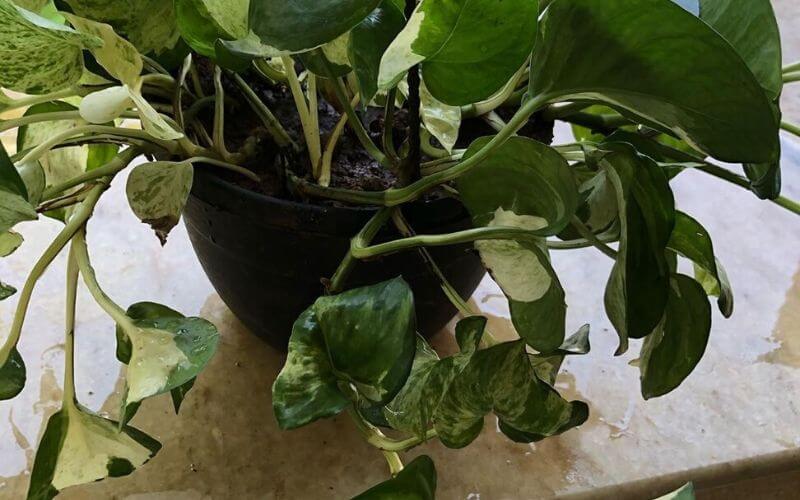
To prevent overwatering and pothos curling, monitor the soil regularly. For soil moisture inspection, press the soil with your hands, and if there is any excess water in the pot, then move pots in direct sun to evaporate water.
Overwatering can also be avoided by growing plants in pots with drainage holes. These draining holes allow excess water drainage from the pots before reaching the soil.
The other signs of pothos curling leaves are root rot. And root rot can be prevented by unpotting the plant and inspecting roots. If the pothos roots are white, it shows the plant is healthy. While the brown roots indicate the plant is unhealthy.
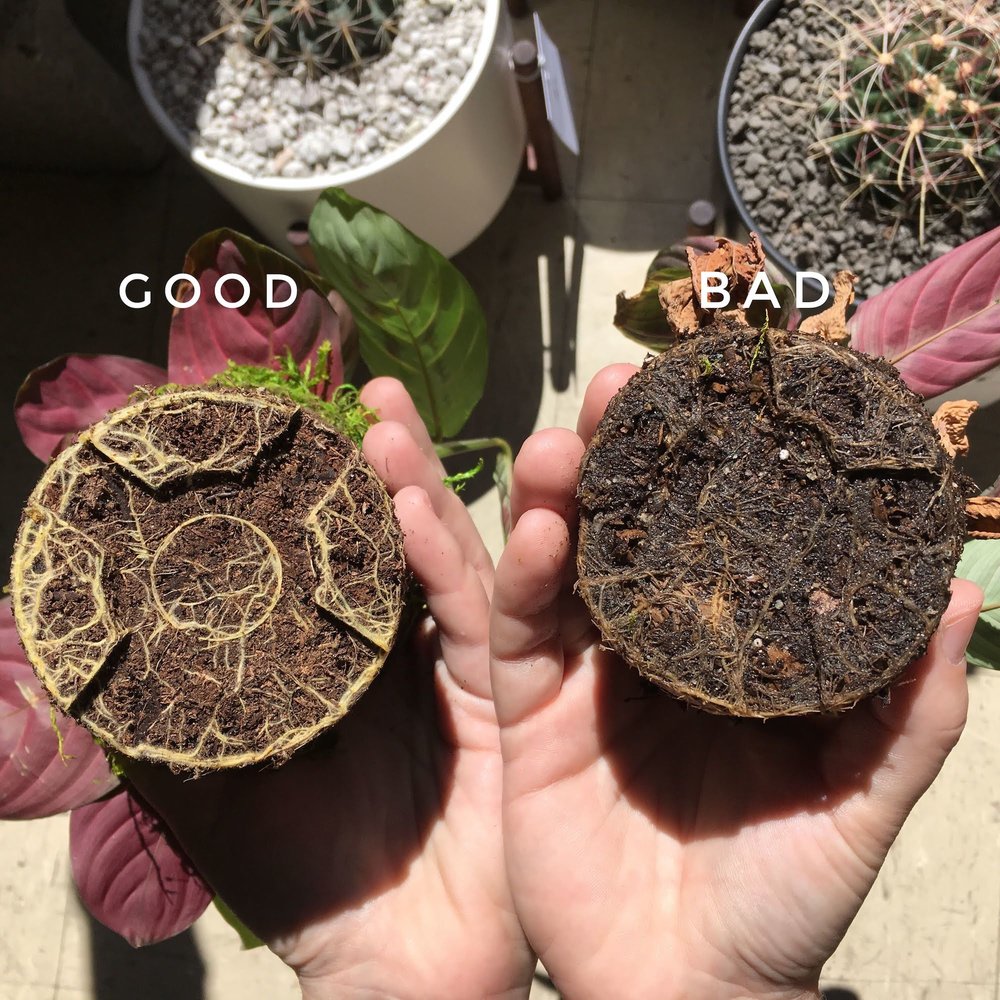
Use scissors and pruners to remove the rotted roots because dead roots mean no nutrients and oxygen supply. Once the dead roots are removed, change the plant pot to more fresh and well-draining soil.
Under-Watering
This trailing vine needs proper watering conditions (no underwatering and overhead watering). In the case of underwatering, pothos leaves curl to retain moisture. Because many think the pothos plant is low maintenance and survive with less watering.
The underwatering conditions have a more significant impact on plant health in the long term. Pothos leaves start to curl, become weak, and eventually die due to poor watering. To prevent pothos leaves from curling, water them once a week or every week.
Also, let the soil dry between each watering because pothos prefers dry and fresh soil.
Maintain a pothos watering schedule, and before watering, constantly monitor soil by pressing index finger in the soil up to one inch. In this way, these indoor plants will never suffer leaves curling due to underwatering.
Temperature Stress
Temperature stress also causes pothos leaves to curl. You will notice permanent downward curling of pothos leaves when too much heat and cold. If the room temperature is not in a good range, the pothos indoors develops downward curling with brown tips.
The optimum temperature for pothos is 18-29°C for healthy growth and appearance.
To prevent pothos from excessive heat, do not put plants in direct sunlight and keep indoor plant pots with enough airflow. Also, maintain the room temperatures within the growth range of pothos.
Excess Fertilizer Application Or Too Much Feeding
Too much feeding or fertilizer applications cause the pothos leaves curling. The fertilizer applications in houseplants are tricky because over-application causes yellow leaves and salt accumulation in the soil. The other important symptom of overfeeding is the downward curling of leaves and the following:
- Root rot
- The crusty white appearance of potting soil
- Falling of leaves
Apply fertilizers once a week to prevent salt build-up, curling, and yellowing pothos leaves. Then, replanting the houseplants in new pots with fresh soil. Replanting in new pots is the best way to get rid of excessive nutrients and eradicate leaf curl.
Excessive Light Exposure
Pothos plant loves natural light. They grow healthy, shiny flat leaves when they have adequate light exposure. Therefore, the pothos pots should be correctly positioned near sunnier windows or places to maintain enough light exposure.
However, when there is not enough light, pothos leaves start curling downward from the tips.
This issue can easily be solved by placing pots at the right spot that gets more natural light throughout the day.
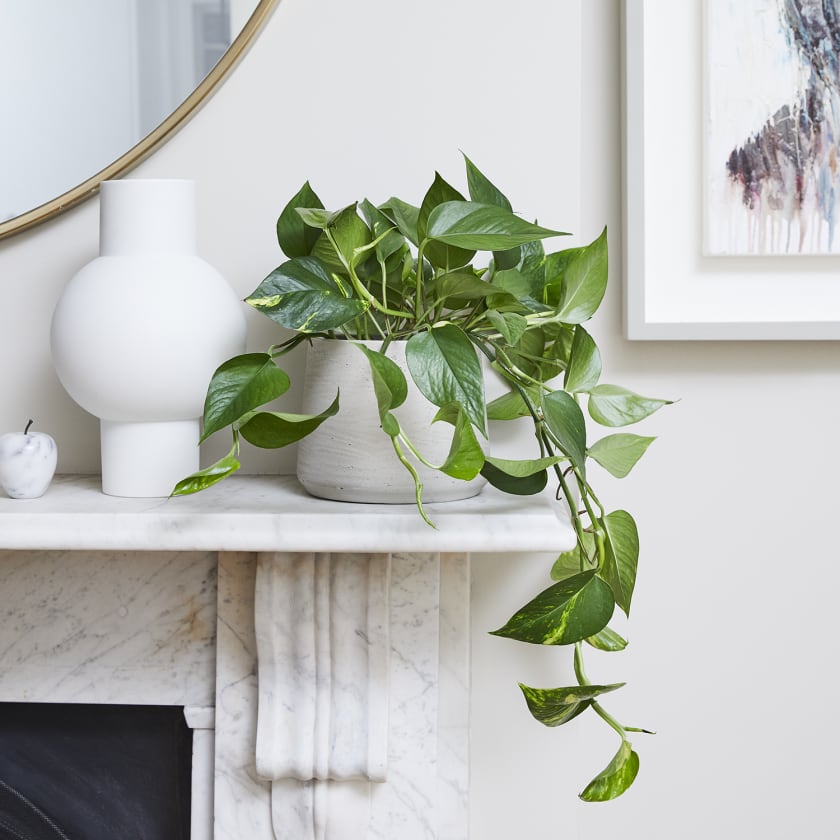
RELATED: What Type of Pothos Do I Have? Let Us Solve the Puzzle!
Care Tips To Avoid Pothos Leaves Curling
Pothos are beautiful indoor plants and grow in any condition. However, these trailing vines shine healthy in an ideal environment. Following care tips should be kept in mind to avoid pothos leaves curling:
Do not overfeed the pothos because overhead fertilizer applications will damage the pothos leaves and increase salt contents in soil. Instead, only feed the plant monthly with balanced fertilizers to provide the nutrients.
Always maintain the temperature within the growth range of pothos. The minor temperature changes (excessive or low heat) can lead leaves to curl.
Pothos like high humidity and healthy growth can be achieved by placing plants in humid areas like the kitchen and bathroom.
Balanced water (no underwatering and overwatering) encourage healthy plant growth and prevent root rotting. Always allow the soil to dry before the next watering and repot the plants in new pots with well-draining soil and holes.
Pothos like natural light, and by placing them near the direct sunlight sources, the healthy growth of trailing vines can be achieved.
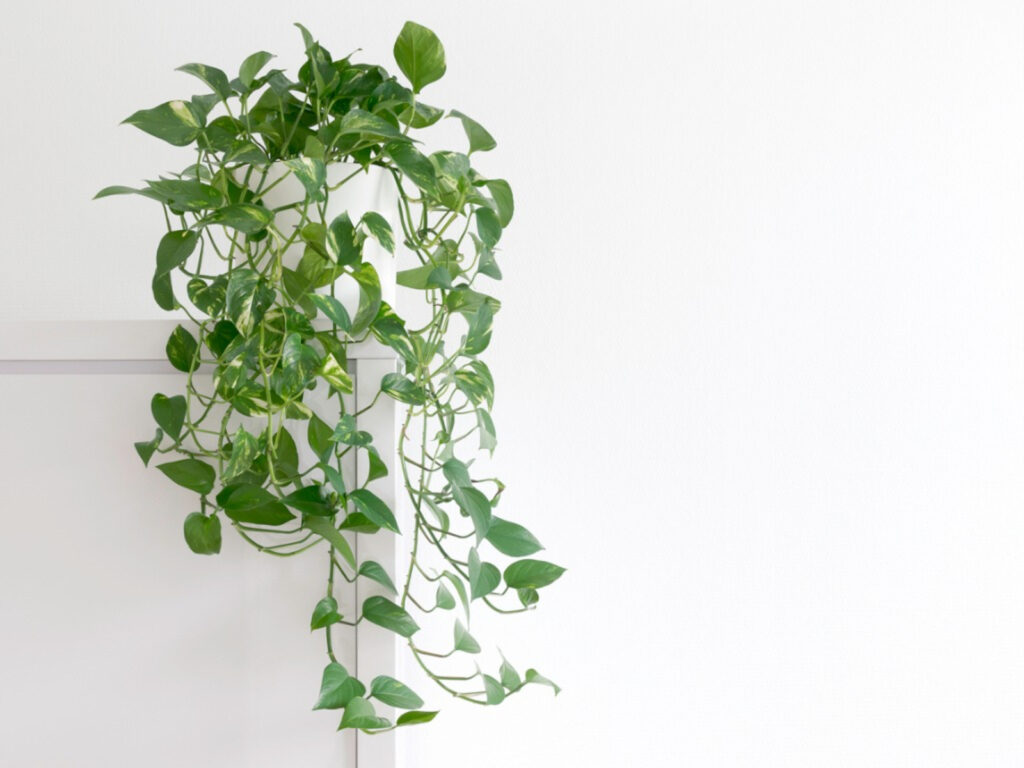
Frequently Asked Questions (FAQs)
How Do You Tell If Underwatering Vs. Overwatering?
Houseplants survive in ideal growing conditions such as soil, light, temperature, and humidity. However, if the soil is dry and pothos leaves curling towards the ground with brown tips, the plant is underwatered.
Conversely, when the soil is wet and plant leaves show yellowing and curling of leaves, then the plant is overwatered and overwatering leads to waterlogged soil (means no water and nutrient supply).
Is Leaf Curl Virus Disease?
The curling of houseplant leaves occurs due to abiotic (light, temperature, soil) and biotic factors (bacteria and mainly viruses). The curling of leaves due to temperature stress and soil can be revived. While the biotic stress permanently damages the plants and leads to wilting.
Is Leaf Curl Infectious?
Yes, leaf curl infections occur, and the symptoms of plant virus infections include yellowing and browning of leaves, downward and upward curling, and stunted growth.
What Are The Signs Of Root Rot?
The signs of root rot include wilting, stunted growth, and discolored leaves. Leaves and shoots dieback and the entire plant dies. While pulling the plant from the pot will show the roots are brown and soft instead of white and firm, which is a sign of healthy roots.
Sources For Further Reading
- Gibbs, A., & Hudelson, B. (2005, June 11). Pothos. Plant Disease Diagnostics Clinic. Retrieved January 14, 2022, from https://pddc.wisc.edu/2015/07/31/pothos/
- Moorman, G. W. (2016, July 31). Pothos Diseases. PennState Extension. Retrieved January 14, 2022, from https://extension.psu.edu/pothos-diseases
- Iannotti, M. I. (2021, October 20). How to Grow and Care for Pothos. The Spruce. Retrieved January 14, 2022, from https://www.thespruce.com/pothos-an-easy-to-grow-houseplant-1403154
Discover new plants, check out our list of Green Plants, Purple Plants and Egyptian Plants







